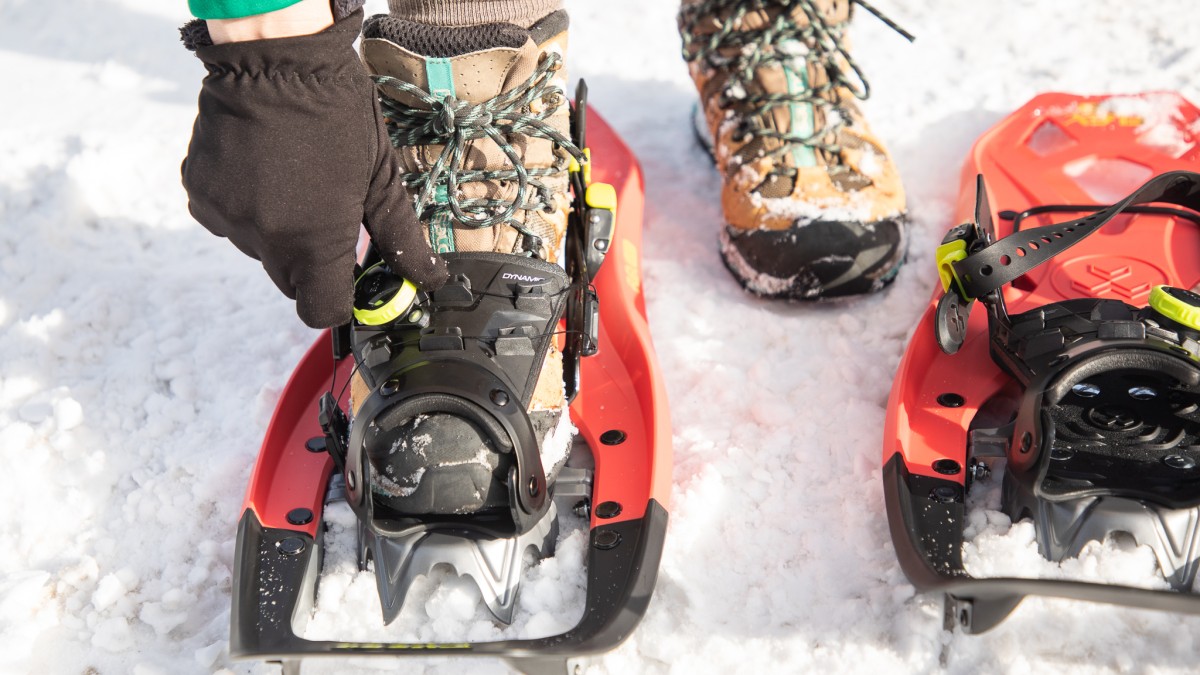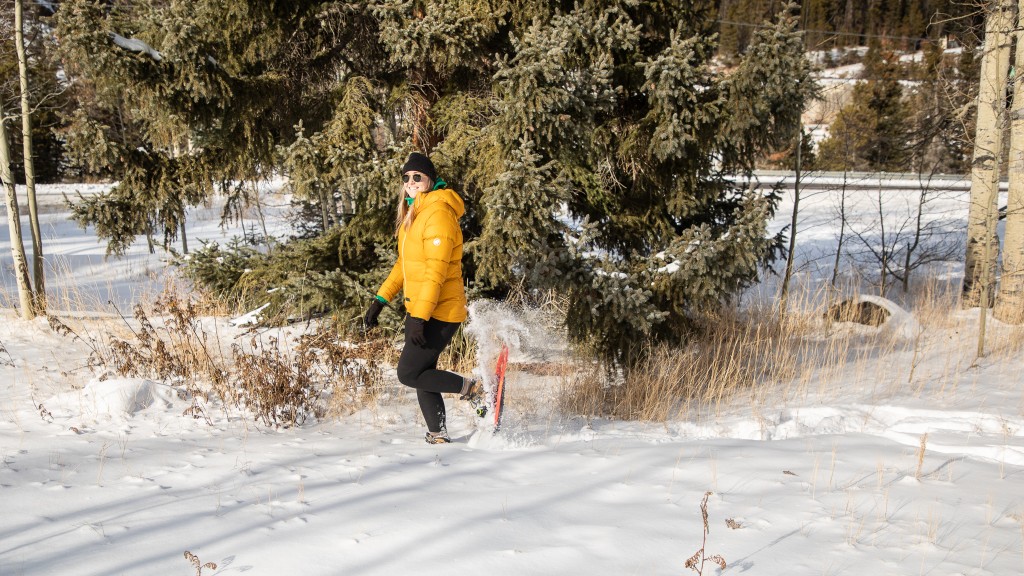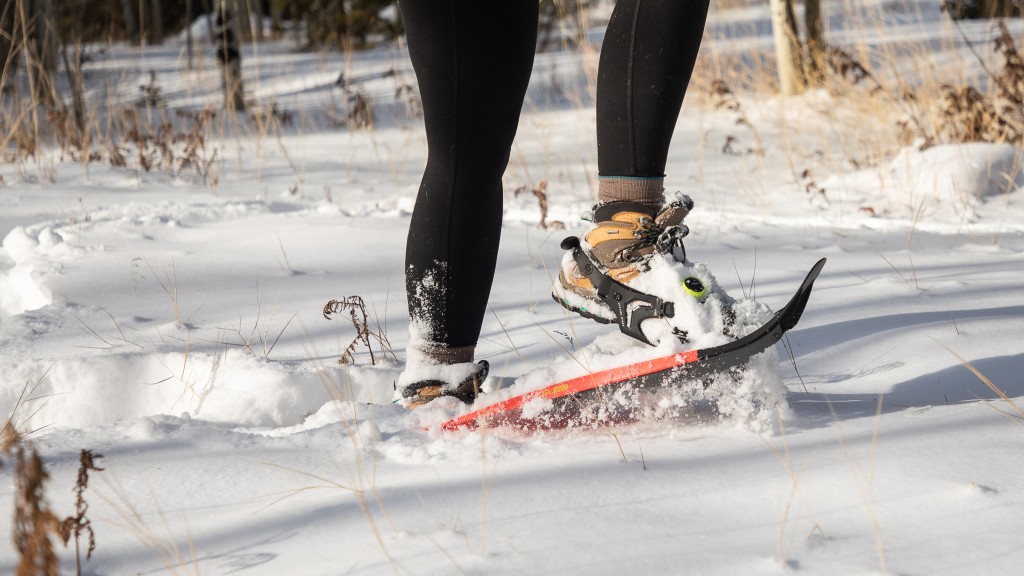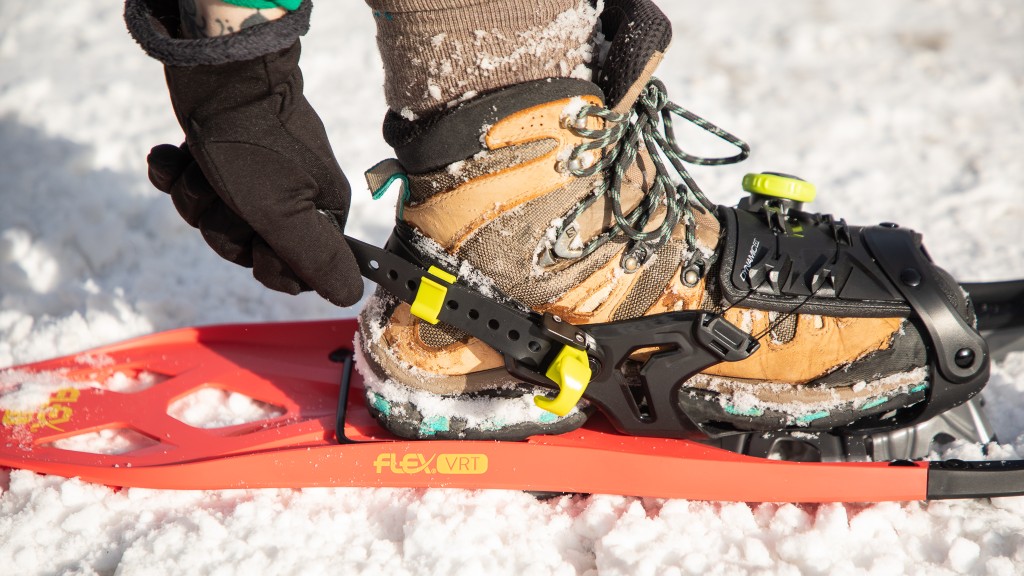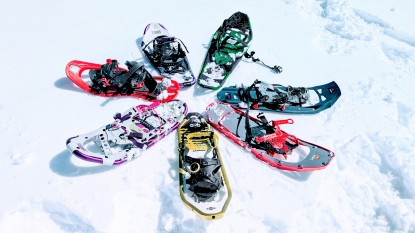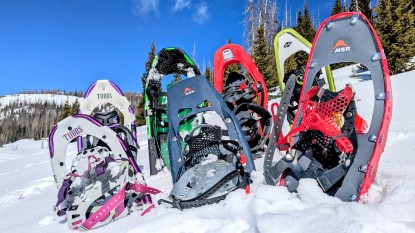Our Verdict
Our Analysis and Test Results
This 4.3-pound snowshoe is available in two lengths, 21 and 25 inches, accommodating people from 80 to over 200 pounds. The composite decking and frame offer a unique level of support on uneven ground, and the binding system is both comfortable and incredibly easy to operate. Read on to see how the Tubbs Flex VRT measured up in our testing.
Performance Comparison
Flotation
The Flex VRT is made of premium composite decking and offers average float. While plastic decking has the potential to offer great float due to its rigidity, it can also be a little heavy. The holes in the back of this snowshoe help dump snow quickly while walking, but they also make the surface area slightly smaller. The Flex VRT is not going to leave you post-holing too hard, but you won't be frolicking across fresh deep powder either.
Traction
The Flex VRT comes equipped with aggressive traction rails and the Viper 2.0 crampon. The teeth span about two-thirds of the shoe and vary in size, ensuring that this shoe can grip most terrain. It works especially well on packed snow and ice. The composite decking is quite stiff, but the FLEX tail allows for the traction rails to engage in the ground, ensuring that the entire foot is able to come in contact with the ground, making the this a great option for uneven terrain.
Stride Ergonomics
The Flex VRT is 8.5 inches at its widest and, like most snowshoes, narrows at the toe and heel. The Flex Torsion Deck technology allows the user to walk with a natural heel-to-toe stride. It also offers the perfect combination of rigidity and flex to provide support on uneven terrain.
The Torsion Deck also absorbs shock, making long hikes gentler on the joints. The Rotating Toe Cord design has a rotation limiter which keeps the front of the snowshoe from hitting you in the shin while still allowing the shoe to shed snow naturally with every step.
Ease of Use
The binding system has a BOA closure which is very easy to use, even on the fly. To tighten the bindings, you simply twist the knob to the right, and to take them off, you pull the knob out and lift the binding up. It can be done quickly, in deep snow, and even with thick gloves on. The EZ Heel Buckle can also be operated one-handed.
The Flex VRT comes in two lengths, 21 and 25 inches, good for a wide range of people from 80 to over 200 pounds. The 19-degree heel lift makes hiking up steep hills easier, and it pops down quickly with the push of a finger or a hiking pole. The only gripe we have with the Flex is that the loud decking can distract from enjoying the peaceful outdoors, especially on ice and packed snow.
Bindings
The DynamicFit 2.0 binding wraps around the entire front half of the foot, and the BOA Fit System cinches down evenly, ensuring a very comfortable fit. The EVA foam also provides additional shock absorbency and a versatile fit.
Should You Buy the Tubbs Flex VRT?
If your main concern is a comfortable and easy-to-use binding system, the Flex VRT is next to perfect. Unfortunately, it is also on the pricier side of the spectrum. There are other options in our test suite that perform better and cost less, but if you plan to spend time on varied, uneven terrain, the semi-flexible composite decking provides a lot of support.
What Other Snowshoes Should You Consider?
The Tubbs Wilderness has a different but equally comfortable and easy-to-use binding system, but it's a little less expensive. If you're less concerned with pricing and more concerned with finding a snowshoe that can take on any terrain, the Atlas Range-MTN is an absolute dream and also offers a BOA binding system, which is easy to adjust on the go. If you are a beginner snowshoer and looking for something truly budget-friendly, the MSR Evo Trail offers great bang for the buck, although the binding system is a little more involved.


